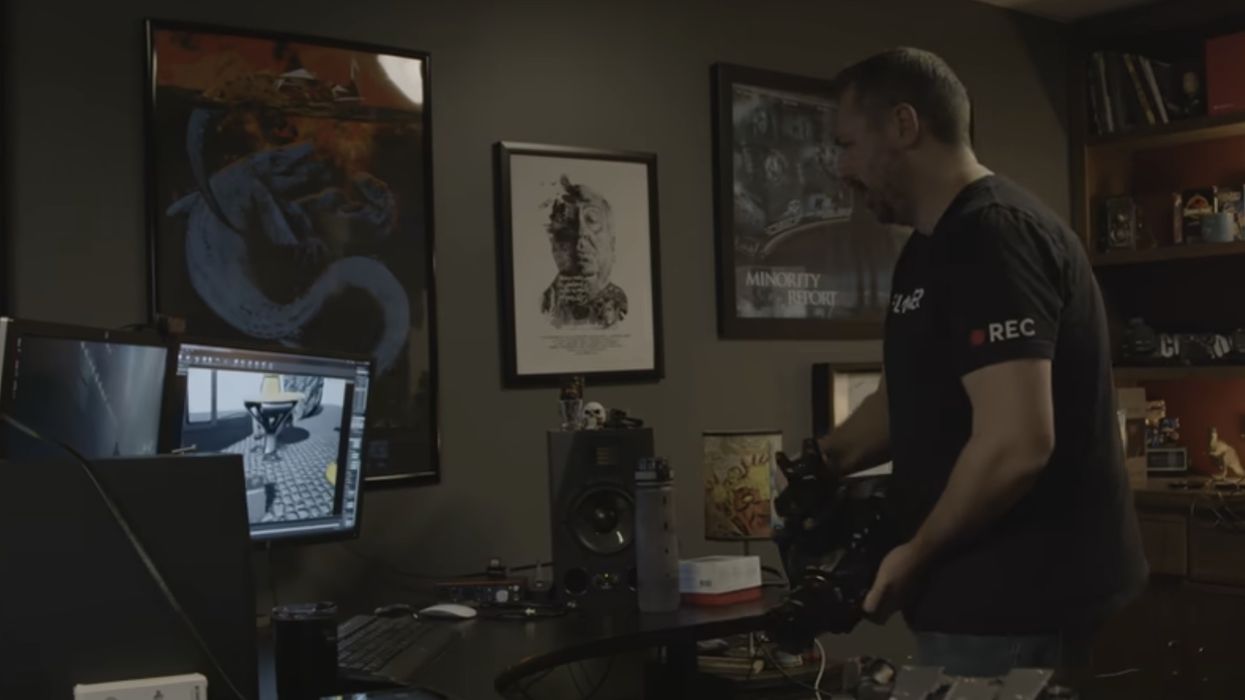Can DIY Filmmakers Create Their Own Virtual Production?
It’s called "the Volume," but its official name is Stagecraft.

And it’s the game-changing method by which the filmmakers of Disney+ epic The Mandalorian take viewers to planets in a galaxy far, far away. All from the safety of a soundstage. It’s so real, that it’s made the century-old techniques of greenscreen and previz obsolete, and everyone wants to use it.
The volume employs massive 8K LED illuminated backgrounds that are computer generated to create a photo-real environment with computer software called Unreal Engine, which wraps around physical sets and real actors to create a seamless, immersive effect.
But can low-budget indies or content creators get in on the action? Ryan Connolly from Film Riot is convinced it’s possible, and he’s coming close with a 4K projector and a very powerful PC. But it isn’t easy.
Connolly has been on a journey for a decade learning his craft and doing it with a DIY flare. If he could figure out a way to create a popular cinematic technique on a budget, it’s just another arrow in his quiver.
For the last six months, he’s been working with Unreal Engine. Designed for the fluid environments of a video game, Unreal Engine can render backgrounds and characters in real-time that are insanely realistic and can be manipulated as the camera is rolling.
Check out his project below.
How does he do it?
The trouble is, you need a very powerful PC from Puget Systems and a special tracking system that can translate the movements of the camera and actors in virtual space. That’s where HTC's prototype Mars Tracker System and a device called the Damos come into play.
After some time setting up a virtual camera in Unreal Engine to mimic its real-world counterpart, Connolly was able to project the computer-generated background with parallax. When he moved the camera, the background image could move along with it as if it was actually there.
The result is that actors can now immersively interact with their virtual surroundings, even with real props and set dressing, while the background is virtually projected. No longer does an actor have to use their imagination as they perform in front of a difficult-to-light chroma key, and then wait for post-production to fill in what’s missing.
Additionally, Epic Games has a marketplace where digital artists can offer virtual worlds for filmmakers to explore, without ever leaving the studio set.
Unreal Engine is at the very leading edge of filmmaking, and content creators can make it as real as their budget allows. Just like any other technique. However, Connolly believes that as the technology matures, it’ll not only be ubiquitous, but even affordable for the most modest of projects.
And the crazy part?
Unreal Engine is free to use for anyone who has the equipment to make it work. And that gear is getting cheaper all the time. And filmmakers will be happy to learn to walk all over again to use it.
Have you tried it yet?
Read our series on virtual production if you'd like to get started.
Source: Film Riot











